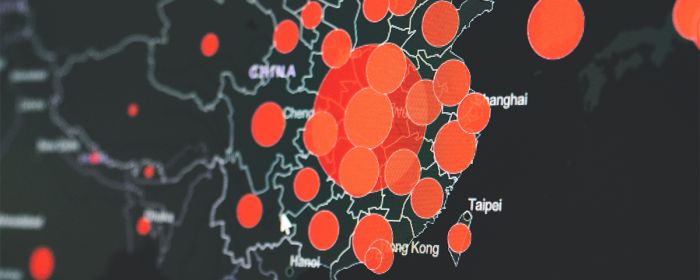There is a growing global consensus that COVID-19 will remain with us for the foreseeable future, and we will need to deal with outbreaks and adapt. An exception to this consensus is China, where the official position is that a single case of the virus is too many. Other countries, like Singapore and New Zealand, pursued similar eradication strategies. Those countries have modified their approaches following the emergence of the Delta variant, which has a shorter incubation period, making contact tracing more difficult.
Many Chinese citizens have supported the zero-tolerance policy on grounds of national pride and embrace of a siege mentality. The approach distinguishes the country from Western states, which are often portrayed in official media as unfairly critical of China's handling of COVID from its origins. Chinese people have rallied to the cause, with older individuals recalling the collective effort required to fight SARS.
China remains resolute in its zero-tolerance stance, but has hit an inflection point. Its Herculean efforts to eliminate every infection appear to be hurting the country and the rest of the world. China’s retail spending is weak, the state apparatus to check and control for COVID is taking enormous resources and making travel and work challenging, and cargo handling at ports has slowed. The tourism sector has also suffered.
Current policy translates into a ban on most foreign travel and regular shutdowns at ports for mass testing, if even just one case of COVID is detected. The knock-on effects on supply chains are contributing to persistent product shortages and delays globally, and in turn contributing to inflation globally, including in Canada. Local economies within China have been disrupted by lockdowns and curbs on inter-provincial travel.
S & P 500 has warned that the current approach could stress Chinese firms if outbreaks (which continue to happen) lead to further disruptions. Western firms with operations in China note growing favouritism toward domestic enterprises as China keeps borders closed and turns inward (with anecdotal reports of officials engaged in rent-seeking by making exceptions).

New data from RIWI (Fig. 1) show that public sentiment has shifted dramatically in the past few months. When asked anonymously, and in all parts of the country, half of respondents indicate that they believe that the COVID crisis will be with us for at least the next two years or longer – compared to just over one-third in July.
With 75 per cent of the population fully vaccinated (plus an additional unknown per cent unvaccinated but having at least partial immunity from having recovered from COVID), China is actually in a good place and arguably does not need to obsess as it currently does about every single positive case.
Some Chinese health professionals have opined that the zero-tolerance policy can go as vaccination rates rise further. Gao Fu, Director of the Chinese Center for Disease Control and Prevention, has publicly mused that the country could open up if it reaches a vaccination rate of 85 per cent (which could happen in Q1 of 2022, particularly with continued use of coercive tactics and even forced vaccination).
The impending winter is likely to witness faster spread of the virus. Thousands of athletes are arriving for the Beijing Olympic Games in February, and the country is in the midst of its fourth COVID outbreak in the past five months.
With economic growth slowing, Chinese authorities face more questions, internally and externally, about the need to maintain current strict measures. The contrast with neighbouring countries will become more pronounced as they open up to vaccinated foreign visitors. Still, the government is not likely to budge as long as other states continue to struggle in their management of the virus and have lower vaccination rates. Instead, for the foreseeable future, China will continue incurring the substantial costs of almost – but never quite completely – eliminating COVID from among its 1.4 billion people.






